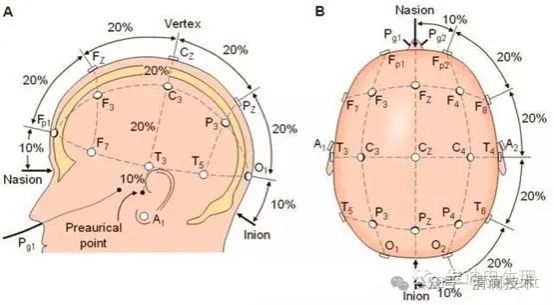Comparative Analysis of Sleep Monitoring Capabilities: mmWave Radar vs. Polysomnography(PSG)
2025-05-08 00:00
Medical institutions primarily utilize PSG for comprehensive sleep diagnostics.
This clinical standard records physiological parameters during sleep to evaluate disorders including sleep-disordered breathing, sleep apnea, and hypopnea syndromes. The PSG reflecting its core methodology centered on three critical metrics: EEG (electroencephalography) for brain activity, EOG (electrooculography) for eye movements, and EMG (electromyography) for muscle tone.
EEG for monitoring brain activity:
General patient EEG electrode locations (10-20 electrode sites).

EMG for monitoring muscle activity:
Two leads to monitor horizontal and vertical eye movements. Electrode pads on the left and right outer corners of the eyes help us to recognize REM rapid eye movement periods.
EMG for muscle activity:
Usually placed at the jaw to monitor muscle tone during sleep. Placed at the occlusal muscle, it can also monitor teeth grinding; placed at the tibialis anterior muscle to diagnose leg movement during sleep; intercostal muscle to determine breathing during sleep; airflow monitoring catheter at the nose and mouth to monitor respiratory airflow and pressure; CHEST/ABD: Chest and abdominal belt to monitor chest and abdominal movement during breathing; SNORE: to directly detect snoring sound level;
PSG is the gold standard for detecting Obstructive Sleep Apnea Hypopnea syndrome (OSHAS):
1.Sleep Apnea (SA): the disappearance or significant weakening of oro-nasal respiratory airflow during sleep (≥90% decrease from baseline amplitude), the Duration ≥10 S.
2.Obstructive Sleep Apnea (OSA): is the disappearance of oro-nasal airflow, thoracic and abdominal respiration still exists. Its upper airway obstruction and apnea, but the central nervous system respiratory drive function is normal, continue to send out respiratory movement instruction excitation respiratory muscles, so the chest and abdomen respiratory movement still exists.
3.Central Sleep Apnea (CSA): refers to the simultaneous disappearance of oral and nasal airflow and chest and abdominal breathing. Caused by central nervous system malfunction, the central nervous system can not send out effective instructions, respiratory movement disappeared, the mouth and nose airflow stopped.
New Sleep Monitoring Device Millimeter Wave Radar
MMWave radar is based on the Doppler principle, through the radar actively transmits millimeter waves and analyzes the reflected echoes from the human body, it can calculate the target human body's movement trajectory, respiration, heartbeat, body movement and other vital signs data.
Tsinglan tech self-developed breathing/heart rate algorithm, through a large number of samples, and constantly iterative tuning. It can judge the respiratory heart rate level of the person in bed, track and record the user's sleep time in bed, roll over, leave the bed times and other parameters, judge the deep sleep, light sleep, awake time, analyze the quality of human body's sleep and score, and give a professional report on the quality of sleep.
The ability and accuracy of Tsinglan mmWave radar in sleep monitoring passed the evaluation of the equipment used in the Respiratory Rehabilitation Department of Shenzhen Qianhai Shekou Free Trade Zone Hospital. After 10 volunteers tested and compared the monitoring data of Tsinglan Radar and PSG.
Recommended news
Millimeter wave radar that truly meets the needs of actual scenarios
Copyright © Qinglan Technology (Shenzhen) Co., Ltd | 粤ICP备2022058611号 SEO
Support: www.300.cn
Tel: 0755-26666874
Company address: 602, Block A, Wanhai Building, Shekou Wanggu, Yanshan Community, Merchants Street, Nanshan District, Shenzhen, Guangdong Province
Email: sztsinglan@tsinglanst.com
We will give you feedback in a timely manner



